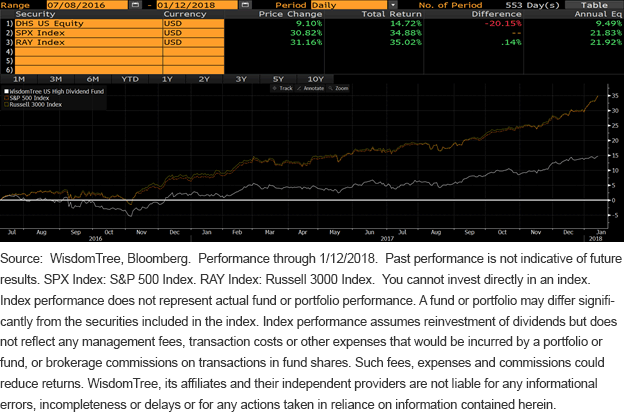Ask the market what fate awaits stocks with high dividends, and the answer often lies in the outlook for interest rates. This is logical. When bond yields rise, the incentive to own stocks that offer higher dividends wanes, and vice versa. Fortunately for the WisdomTree U.S. High Dividend Fund (DHS), a rising rate environment hasn't hit the market in recent years, right? Actually, wrong.
In the summer of 2016, U.S. 10-Year Treasury note yields collapsed to 1.359%, and they have subsequently risen more than a full point, to 2.55%.1 The pain in yield-oriented DHS has been palpable (figure 1).
Figure 1: Performance Since 2016 Low in 10-Year T-Note Yield

Click WisdomTree U.S. High Dividend Fund (DHS) for DHS standardized performance.
The thing is that right now there is a remarkably crowded Wall Street consensus that U.S. 10-Year T-note yields will continue to rise in 2018, so much so that predictions by 54 out of 61 economists compiled by Bloomberg in January see them going higher. In fact, not one economics team put a “1” as the first digit on the yield for the end of 2018. This is a crowded consensus.
If they are right, more trouble is probably in store for DHS compared to broad U.S. equity indexes. However, if they are proved wrong, which happens too often for comfort when the consensus is lopsided, we could be looking at a value play for the few who entered 2018 with a contrarian view on rates. And rates may not even have to move lower to aid DHS; it could be as simple as a situation in which rates do not move much higher, or that they chop sideways, disappointing the economists' collective forecasts and surprising the masses.
The “Siegel Chart”: Put It Under the Pillow, Rip Van Winkle



